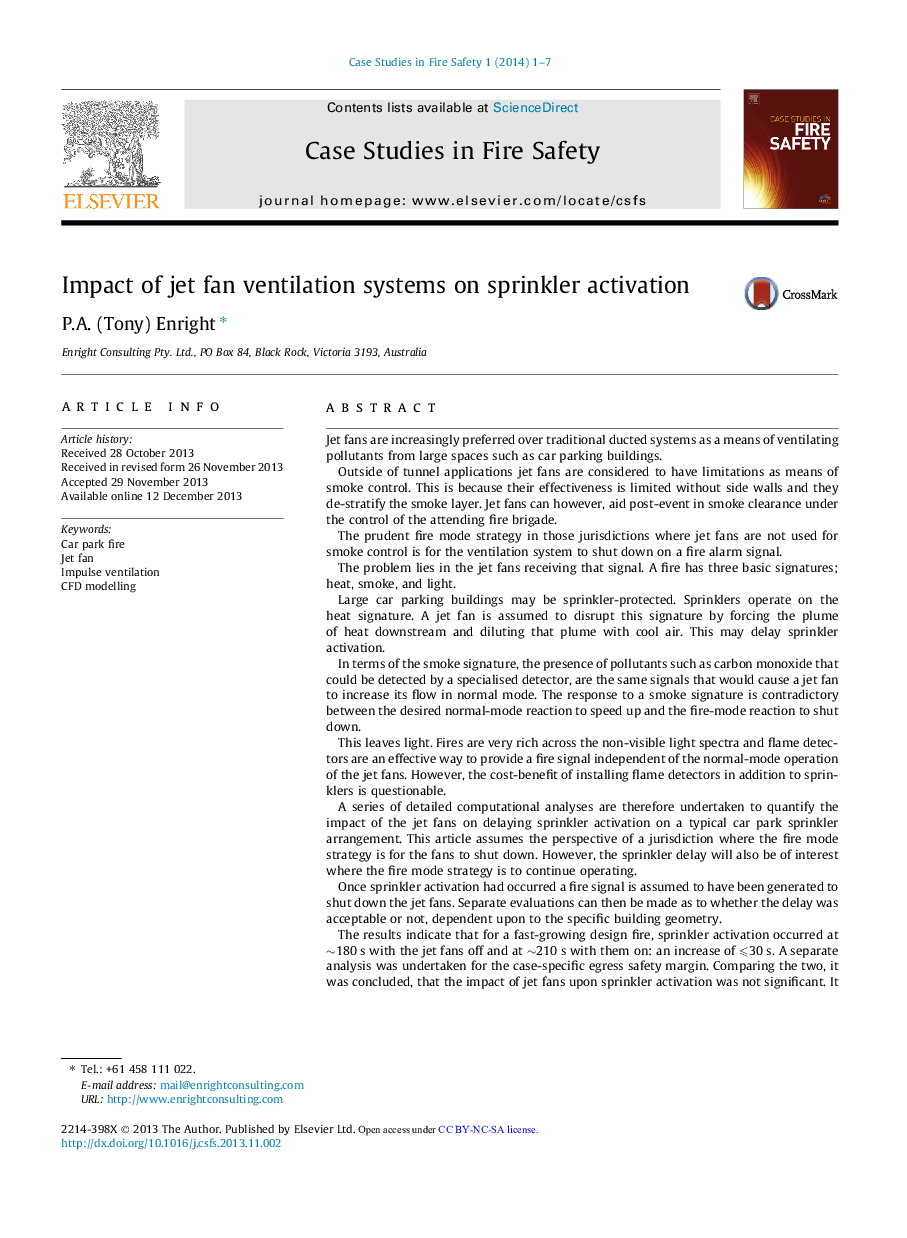| کد مقاله | کد نشریه | سال انتشار | مقاله انگلیسی | نسخه تمام متن |
|---|---|---|---|---|
| 250559 | 502879 | 2014 | 7 صفحه PDF | دانلود رایگان |
Jet fans are increasingly preferred over traditional ducted systems as a means of ventilating pollutants from large spaces such as car parking buildings.Outside of tunnel applications jet fans are considered to have limitations as means of smoke control. This is because their effectiveness is limited without side walls and they de-stratify the smoke layer. Jet fans can however, aid post-event in smoke clearance under the control of the attending fire brigade.The prudent fire mode strategy in those jurisdictions where jet fans are not used for smoke control is for the ventilation system to shut down on a fire alarm signal.The problem lies in the jet fans receiving that signal. A fire has three basic signatures; heat, smoke, and light.Large car parking buildings may be sprinkler-protected. Sprinklers operate on the heat signature. A jet fan is assumed to disrupt this signature by forcing the plume of heat downstream and diluting that plume with cool air. This may delay sprinkler activation.In terms of the smoke signature, the presence of pollutants such as carbon monoxide that could be detected by a specialised detector, are the same signals that would cause a jet fan to increase its flow in normal mode. The response to a smoke signature is contradictory between the desired normal-mode reaction to speed up and the fire-mode reaction to shut down.This leaves light. Fires are very rich across the non-visible light spectra and flame detectors are an effective way to provide a fire signal independent of the normal-mode operation of the jet fans. However, the cost-benefit of installing flame detectors in addition to sprinklers is questionable.A series of detailed computational analyses are therefore undertaken to quantify the impact of the jet fans on delaying sprinkler activation on a typical car park sprinkler arrangement. This article assumes the perspective of a jurisdiction where the fire mode strategy is for the fans to shut down. However, the sprinkler delay will also be of interest where the fire mode strategy is to continue operating.Once sprinkler activation had occurred a fire signal is assumed to have been generated to shut down the jet fans. Separate evaluations can then be made as to whether the delay was acceptable or not, dependent upon to the specific building geometry.The results indicate that for a fast-growing design fire, sprinkler activation occurred at ∼180 s with the jet fans off and at ∼210 s with them on: an increase of ⩽30 s. A separate analysis was undertaken for the case-specific egress safety margin. Comparing the two, it was concluded, that the impact of jet fans upon sprinkler activation was not significant. It was further established that the smoke disturbance due to the jet fan flow did not adversely affect the visibility for those escaping.
Journal: Case Studies in Fire Safety - Volume 1, March 2014, Pages 1–7
